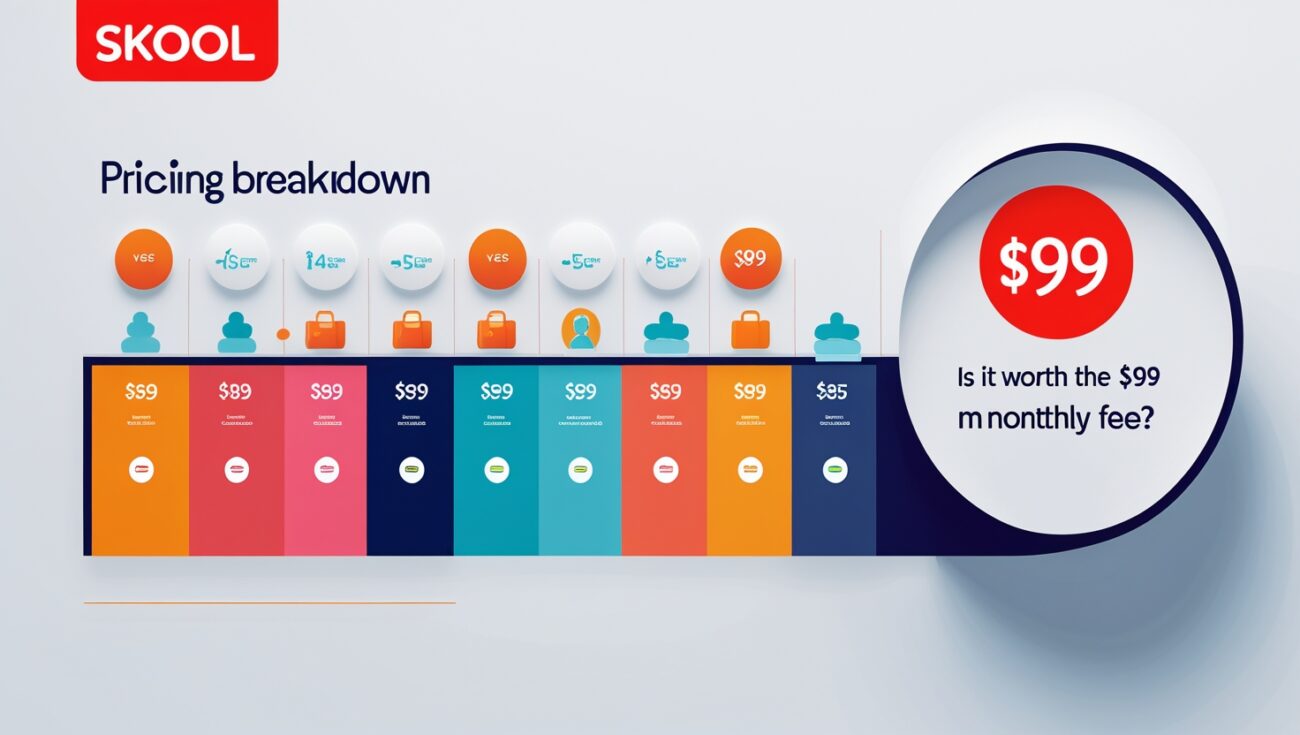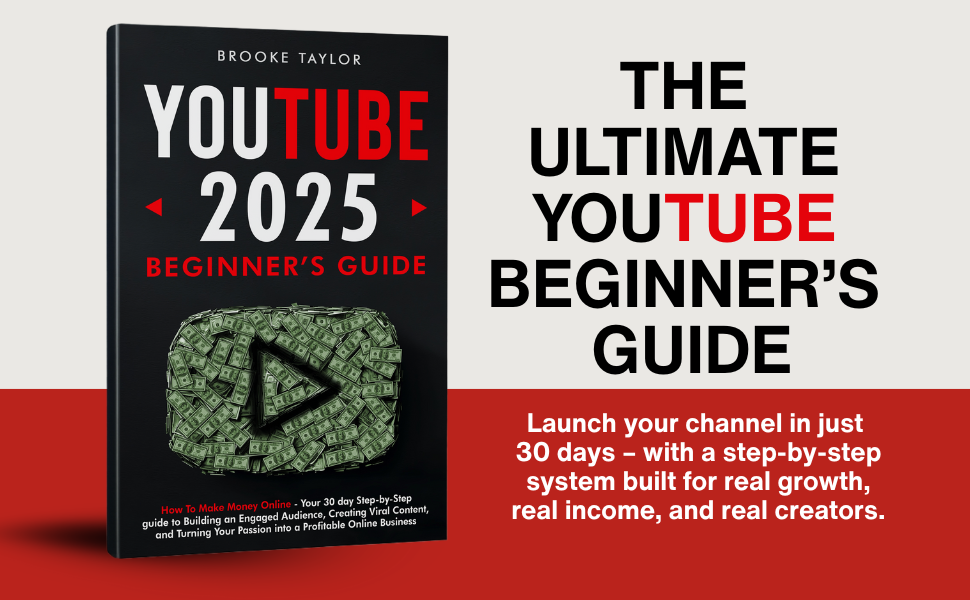Skool Pricing Breakdown: Is It Worth the $99 Monthly Fee?
When I first heard about Skool, I was excited about everything it offered — course hosting, community, and payment integration all in one place. But then I saw the price: $99 per month. I paused. I had questions. Was it really worth it? Could I justify that monthly fee compared to other platforms I’d used?
Now that I’ve used Skool for months to run my own paid membership community, I can confidently say yes — it’s worth every dollar. But in this post, I’ll break down exactly what you’re paying for, what’s included, and how it compares to other tools out there.
If you want to try it for yourself while supporting my work, here’s my referral link:
Join Skool Here

Table of Contents
What Do You Get for $99/month with Skool?
Here’s everything I get for that flat $99 monthly fee — and why it replaced at least 4 other subscriptions I was paying for before:
1. Community Platform (No Facebook Needed)
Skool gives me a private, distraction-free feed where members can post, comment, ask questions, and interact without algorithms or ads. It’s like a cleaner, smarter version of Facebook Groups — but 100% mine.
2. Course Hosting Built In
I upload all my video lessons, PDFs, and training materials into Skool’s “Classroom” section. There’s no need to pay for Teachable, Thinkific, or Kajabi just to host my course. Everything’s organized by modules and easy for members to follow.
3. Integrated Calendar for Live Calls
Skool has a built-in calendar where I schedule coaching calls, workshops, and Q&As. Members get automatic notifications, and it keeps everyone on track without having to manage external tools like Calendly or Google Calendar.
4. Stripe Integration for Payments
This is a big one. I connected my Stripe account once, and now I can charge for access to my community, courses, or coaching groups. No more third-party checkout tools or plugins. Skool handles payments, subscriptions, and access control — all in the background.
5. Gamification and Leaderboards
To keep members engaged, Skool has a built-in points system and leaderboard. It rewards activity like posting, commenting, and completing lessons. This has helped me build a community that stays active without me pushing content every single day.
Skool vs Other Platforms: What I Was Paying Before
Before switching to Skool, here’s what I used to pay monthly for separate tools:
- Teachable: $59/month (course hosting)
- Facebook (free, but filled with distractions)
- Zoom Pro: $15/month (live calls)
- Email + Payment Tools: $29–$79/month
- Total: Over $150/month, plus time spent juggling platforms
Now I pay $99/month with Skool, and all of that is taken care of inside one login.
Is Skool Worth the $99 Monthly Fee? My Honest Answer
For me, the answer is absolutely yes. Skool didn’t just save me money — it saved me time, energy, and mental space. I no longer stress about whether members saw my content, whether links work, or whether payments failed. Everything just works.
But even more important than the features is this: Skool helps me make more money. Because the platform is clean, my members stick around longer. Because it’s simple, I launched faster. Because it’s organized, people get results. And all of that impacts my bottom line.
Who Should Use Skool (And Who Shouldn’t)?
If you’re a creator, coach, or community builder looking to:
- Monetize your knowledge
- Build a paid membership group
- Deliver content and coaching inside one hub
- Increase member engagement and retention
Then Skool is absolutely worth it.
But if you’re looking for an all-in-one marketing funnel tool, advanced email automation, or a website builder, then Skool isn’t built for that. It’s focused. And that’s part of what makes it so effective.
Try Skool for Yourself
I only recommend tools I personally use — and Skool is one of them. If you want to build a professional, scalable community without tech headaches, I genuinely believe it’s the best option out there right now.
Click here to create your Skool group
You don’t need a big audience or a complicated funnel. You just need a message, a mission, and a group of people you want to help. Skool takes care of the rest.
Another thing I didn’t realize until after switching to Skool was how much mental space I was wasting trying to manage multiple tools. I used to spend hours each week updating links, following up on payments, and troubleshooting tech issues between platforms. With Skool, I’m not doing any of that anymore — and that’s time I now spend on building relationships and creating better content.
When you think about the $99 monthly fee, you really have to look at the return on investment. For me, I made that back in my first week just from launching a small paid group. After that, everything else became profit. If a tool helps you generate income while simplifying your life, that’s not a cost — it’s leverage.
Skool also gives me something I never had on other platforms: predictability. I know exactly how it works. I don’t wake up to a surprise algorithm update, a shadow-banned group, or a broken checkout page. I’ve used a lot of platforms over the years, and most of them constantly change. Skool stays stable — and that stability lets me scale with confidence.
One of my favorite parts about Skool is how fast I was able to launch. I didn’t need to hire a designer, configure plugins, or build custom checkout flows. I set up my group, added content, and started sharing my invite link the same day. That’s not just convenient — that’s money saved on development and wasted time.
I also love how Skool looks and feels. The user interface is clean, modern, and easy to navigate, even for people who aren’t tech-savvy. Some of my members are older or new to online learning, and they’ve had zero issues getting around. That’s a huge win for retention and support.
Speaking of retention — mine went up after switching to Skool. I used to lose members every month because they’d forget to show up or feel lost in the chaos of other platforms. Skool gives them structure. They know where to go, what to do, and how to stay involved. That alone makes the $99 worth it for me.
Another hidden cost people forget to consider is stress. Running an online business is already full of challenges. The last thing I need is to constantly troubleshoot tech. Skool has eliminated so much of that noise from my workflow. I log in, serve my people, and log out. It’s that simple.
Even the community tools inside Skool outperform what I used to get on Facebook. I can tag posts, pin important updates, and keep conversations organized without a mess of notifications and unrelated content. That structure helps members stay focused and get results faster — which reflects positively on my brand.
And let’s not forget the Skool affiliate program. Not only am I using the platform to grow my business, but I’m also earning 40% recurring commissions just by recommending something I truly believe in. That’s passive income on top of the income from my paid community.
Here’s my link if you want to get started
If I compare Skool to traditional “all-in-one” platforms like Kajabi or Kartra, the truth is I was always paying more and getting less. Either the community experience was poor, or the backend felt clunky and outdated. Skool does fewer things, but it does them exceptionally well — and that’s what I actually needed to grow.
Another thing to consider is how Skool adapts as you grow. I started with one small group. Now I run multiple tiers inside the same dashboard — and I didn’t have to upgrade to a higher plan or hire someone to restructure my entire backend. The $99/month price stays the same, even as your community expands.
If you’re someone who wants to grow a business without becoming a full-time tech manager, I genuinely believe Skool is the best investment you can make right now. It’s not just a platform — it’s a system that lets you teach, connect, and earn without burnout.
When people first hear about Skool membership, they often assume it’s just another online course platform. But it’s much more than that. A Skool membership gives creators, coaches, and educators a place to host lessons, manage members, and build real recurring income — all in one platform. You can explore it yourself here: Join Skool.
If you’ve been wondering about Skool pricing $99 per month, that’s the flat rate for running your entire group. It includes unlimited members, unlimited lessons, and full access to community and calendar features. There are no hidden upgrades or confusing tiers — one price covers everything you need to grow. You can start testing it risk-free with the free trial at Skool.
Looking ahead to Skool pricing $99 per month 2025, the same model still applies — making it one of the most predictable costs for digital creators. Whether you have 10 or 10,000 members, your monthly platform fee never changes. That kind of stability makes budgeting and scaling a lot easier for business owners.
Now, let’s talk about the Skool commission fee. Skool uses Stripe to process payments securely, which means they take a small transaction fee of roughly 2.9 % + 30¢ per sale. There’s no extra cut beyond that. The rest of your earnings stay yours, and payouts go directly to your connected bank account.
If you’ve ever Googled “how much is Skool subscription,” the simple answer is $99 per month for one group. That single subscription includes every major feature — classroom, community, events, and payments — without needing to buy add-ons. You can start your own group today at this link.
A lot of people also ask “how much does it cost to run a Skool community?” The answer depends on how you price your memberships. For example, if you charge $50/month and get three members, you’re already covering the cost. Everything after that is profit. That’s why Skool is so appealing to small creators — it scales quickly.
Your Skool subscription covers more than just access. It handles hosting, automation, updates, and security automatically. You don’t have to worry about plugins, maintenance, or server fees. That means you can focus purely on delivering value to your members and creating content that converts.
When evaluating Skool fees, keep in mind that many competing platforms charge per member or take a cut of your revenue. Skool’s flat rate and fair transaction structure mean you keep the majority of what you earn. You can see the current setup or start your own group at Skool.com.
Payment flexibility is another big plus. With multiple Skool payment methods available through Stripe, your members can use credit cards or international payments seamlessly. You don’t have to integrate PayPal or third-party tools — everything works out of the box once you set up your account.
The Skool community cost is one of the lowest in the industry considering what’s included. You’re paying for a complete system that replaces at least five other tools. Most users end up saving hundreds each month by consolidating everything into one $99 plan. You can test it for yourself at this link.
Creators often ask, “Does Skool take a percentage?” The short answer: only the standard Stripe processing fee. Skool doesn’t take an additional cut of your income. That transparent structure makes it far easier to forecast your monthly earnings as your community grows.
Finally, if you compare Skool prices with other platforms like Kajabi, Thinkific, or Circle, you’ll see how simple and cost-effective it is. Most of those alternatives charge more per member or limit features behind higher tiers. Skool gives you everything upfront for $99 a month — no tricks, no stress. You can get started today here: Join Skool.







